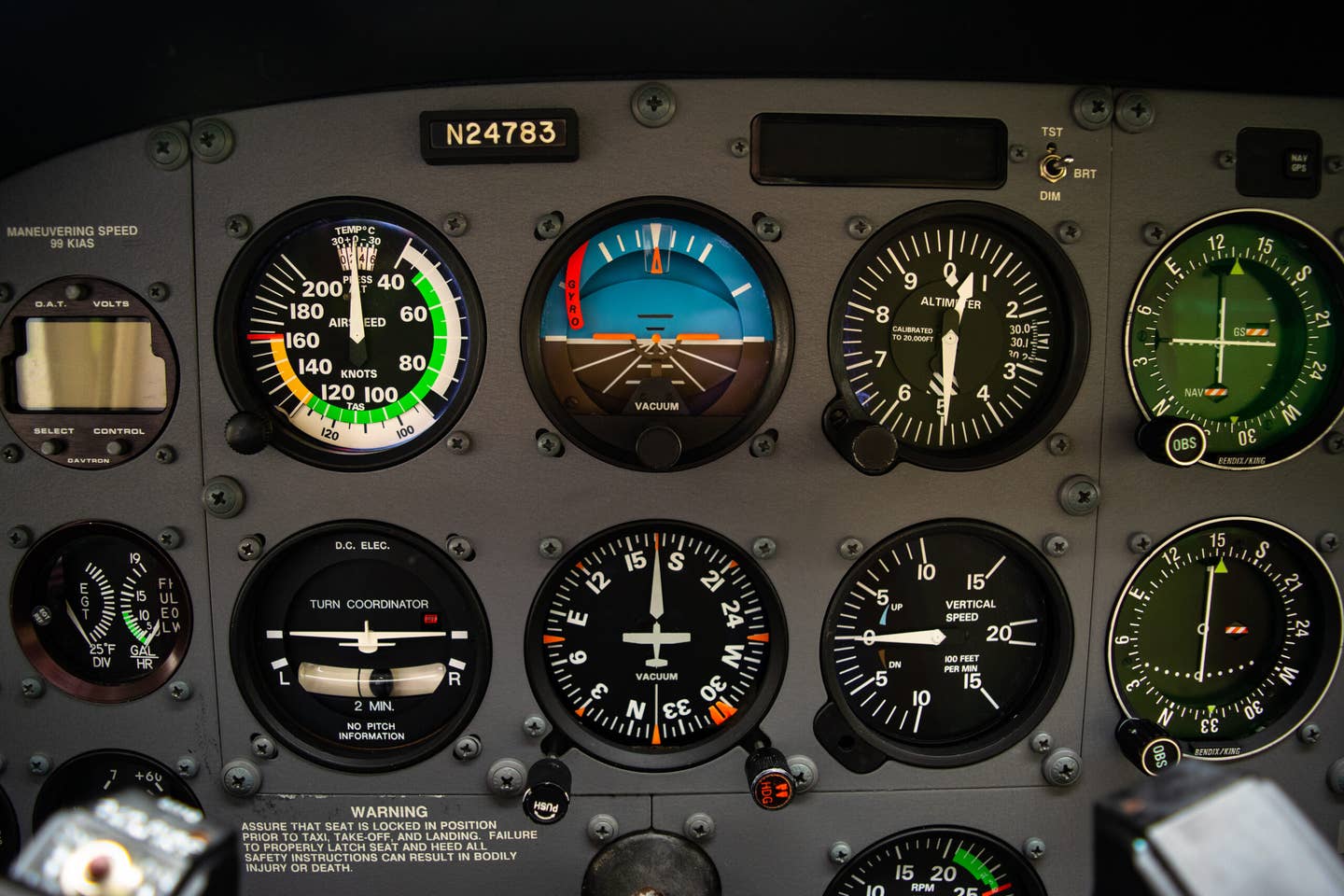
In order to be legal for daytime VFR flight, there are several things an aircraft needs. [Photo: Creation Media/Shutterstock]
Question: I just started my flight training and the airplane has inoperative instruments in the panel. These are round dials, and they have “INOP” stickers over them. The CFI didn’t seem concerned, but I wonder, is this airplane even legal now?
Answer: The answer to your question lies under both FAR 91.205 and FAR 91.207. FAR 91.205 lists the instruments required for daytime VFR flight, where most flight training starts.
In order to be legal for daytime VFR flight, the aircraft needs a functioning airspeed indicator, oil pressure gauge for each engine, manifold pressure gauge for each engine, altimeter, temperature gauge for each liquid-cooled engine, oil temperature gauge for each engine, working fuel gauge, landing gear position indicator if the aircraft has retractable landing gear, magnetic compass, and safety belts. If the aircraft was certificated after March 11, 1996 it also needs to have an anti collision beacon.
- READ MORE: IFR vs VFR: What’s the Difference?
Under FAR 91.207, you will see reference to an emergency locator transmitter (ELT), which is required on training aircraft with certain exceptions, such as when the aircraft is being ferried to a place where repairs or replacement can be made or when it is engaged in training operations conducted entirely within a 50 nm radius from the airport from which local flight operation began.
That's an awful lot to remember. So, you will likely be learning the phrase—A TOMATO FLAMES—to recall these items:
- Anti Collision beacon (if aircraft certificated after March 11, 1996)
- Tachometer
- Oil pressure
- Magnetic compass
- Airspeed
- Temp gauge for engine
- Oil temp
- Fuel gauge
- Landing gear position (if appropriate)
- Altimeter
- Manifold pressure gauge (if appropriate)
- ELT
- Seat belts

Subscribe to Our Newsletter
Get the latest FLYING stories delivered directly to your inbox






